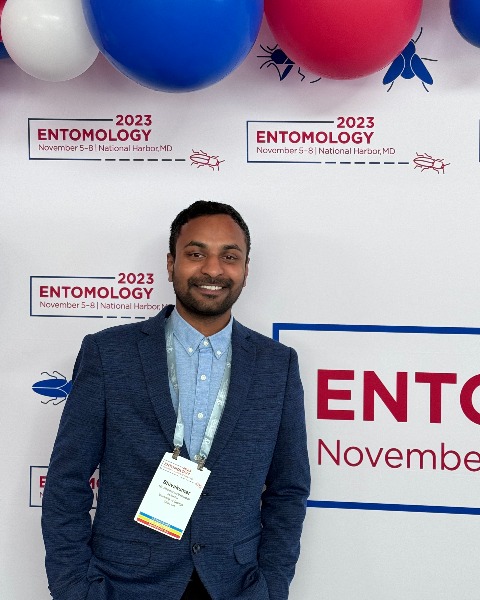Student 10-Minute Presentation
Plant-Insect Ecosystems
Student
Student Competition
Life-history traits of black pecan aphid on selected pecan cultivars

Shivakumar Veerlapati (he/him/his)
Graduate Research Assistant
University of Georgia
Tifton, Georgia
Rajendra Acharya (he/him/his)
Postdoctoral Researcher
University of Georgia
Tifton, Georgia
Apurba K K. Barman
Postdoctoral Research Associate
University of Georgia
Tifton, Georgia
Presenting Author(s)
Co-Author(s)
The black pecan aphid, Melanocallis caryaefoliae (Davis) (Hemiptera: Aphididae), is a primary pest of pecan crops in the southern United States. Feeding by black pecan aphids (BPA) results in chlorotic lesions on leaves, leading to reduced photosynthesis and premature leaf drop. We investigated the aphid's biology, its impact on leaf chlorophyll, and host preference on four commercially important pecan cultivars (i.e., Sumner, Desirable, Avalon, and Lakota) grown in the southeastern production region. Our results revealed that BPAhad the shortest nymphal duration on Sumner (7.66 ± 0.15 days) and the longest on Desirable (8.46 ± 0.16 days). The mean fecundity was highest on Lakota (97.42 ± 3.38 nymphs/female) and lowest on Desirable (53.6 ± 2.69 nymphs/female). Population growth parameters, including the intrinsic rate of increase (r = 0.36 d⁻¹), finite rate of increase (λ = 1.43 d⁻¹), net reproductive rate (R₀ = 95.80 nymphs/female), and gross reproductive rate (GRR = 110.79), were also highest on Lakota. The extent of chlorophyll A reduction by aphid feeding was higher on Avalon (up to 69%) compared to other cultivars. In addition, the multi-choice assay indicated that adult aphids were significantly more attracted to Avalon (37.81%) compared to Desirable (21.48%), Lakota (21.86%), and Sumner (18.83%). These results highlight the differences in pecan cultivars to the damage by black pecan aphids. In the context of integrated pest management of BPA, these results are important for selecting resistant pecan cultivars and the expected level of control measures needed in the field conditions.

.png)

